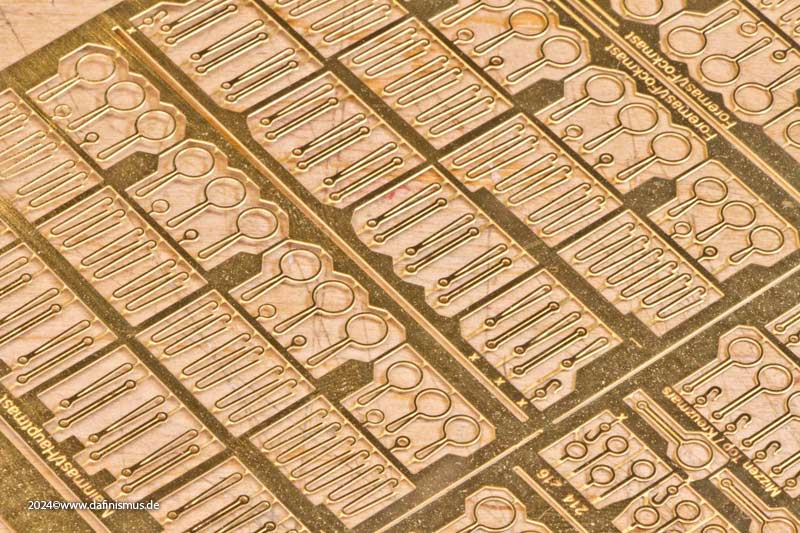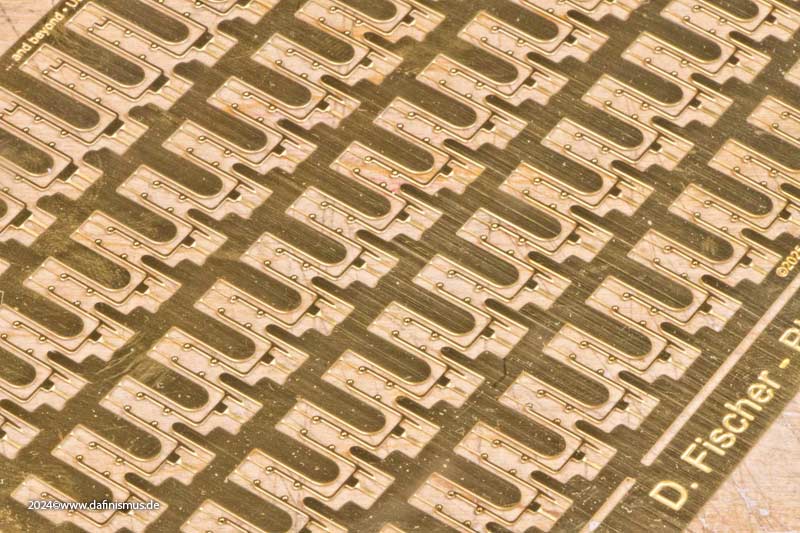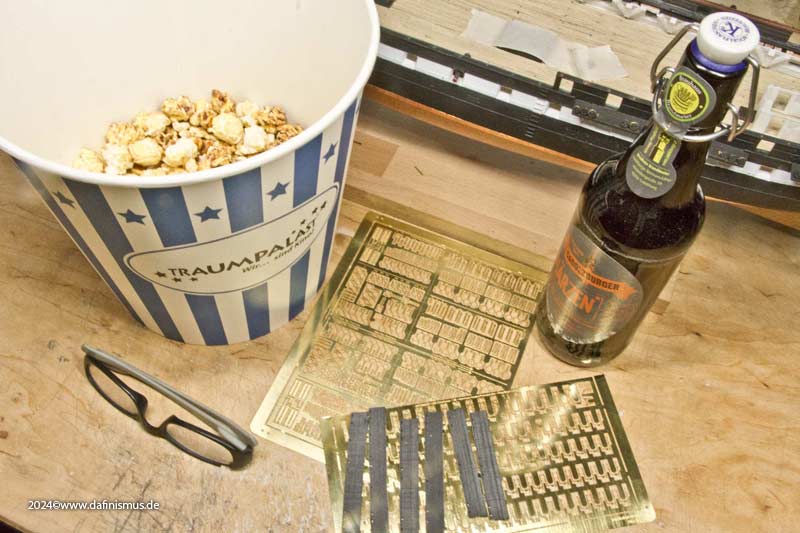Thanx Pete!
And once again, we're well into the new year, Christmas and New Year are over, and there's still no time for contemplativeness.
Nevertheless, I managed to secure a little time for myself and at least finish Victory´s deck comparison.
First, I jazzed up the beakhead bulkhead a bit. Since all contemporary models from around 1800 show this in black, I also decided to forego the usual blue colour.
To fit in the doors, I used the old trick of applying a thin coloured strip to the side, which provides a good visual check when sanding in the tenth of a millimetre range.
Then came the first additions in the freerunning section. In addition to the four supports for the foremast bitts and the stovepipe, the steam truck was added, which diverted the steam from the Brodie stove over the gratings on the forecastle.
This required another open-heart surgical procedure, as another breakthrough was needed. The trunk consisted of a solidly constructed box sitting above a coaming. It was a bit tricky to position it so that the box was only under two parts of the triple grating on the forecastle and the partition wall was covered exactly.
And that wasn't all, yet another hole had to be made: the kitchen skylight. So that the cooks have at least some daylight when preparing meals. To do this, the deck was perforated and opened with heavy clearing tools. Then a little scalpelling and sanding and the next hole was in.
The skylight itself was a bit tricky. The part from my etch kit is two window grids too long, respectively too wide. So I cheekily cut out two grids and, after sanding the cuts down well, simply glued the remains back together with superglue. And, believe it or not, it worked

And this is what it looks like in place, and you can also see what it's for.
These two openings were missing from the museum ship for a long time, and I don't even know if they have been reinstalled there in the meantime...
But you can already see the other addition: the area under the forecastle was also used as a sick bay, for which light temporary bulkheads were used, in this case painted canvas on wooden frames. If necessary, these could be quickly knocked down in the original.
The lower parts of the mainmast bitts were already presented earlier. But I had to rework the positioning so that they were directly below the extensions on the aft deck.
Another popular activity was sealing the old holes on the deck, as the etched parts have a smaller diameter than the standard 1 mm holes in the kit. So 1 mm plastic rods are glued in...
... levelled, centred with a scriber and re-drilled with 0.5 mm.
The supplied railing around the rear companionway also proved to be suboptimal. According to contemporary models, the principle is correct, wooden posts with iron bars, but the proportions are wrong: much too low and the bars much too thick. So a quick reworking to thinner wire bars...
... and raising the posts, with the figure serving as a guide for the height.
This completed the preparations and we were ready to take photos.
Happy tinkering in the New Year from your dafi!

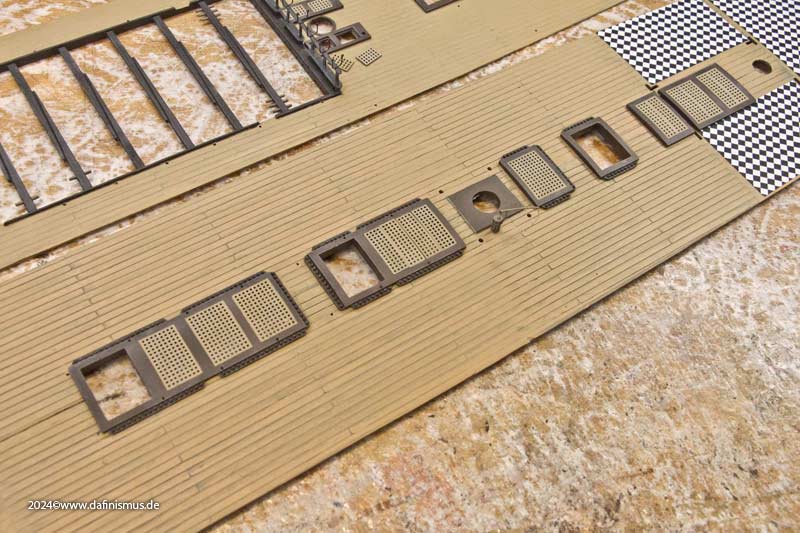
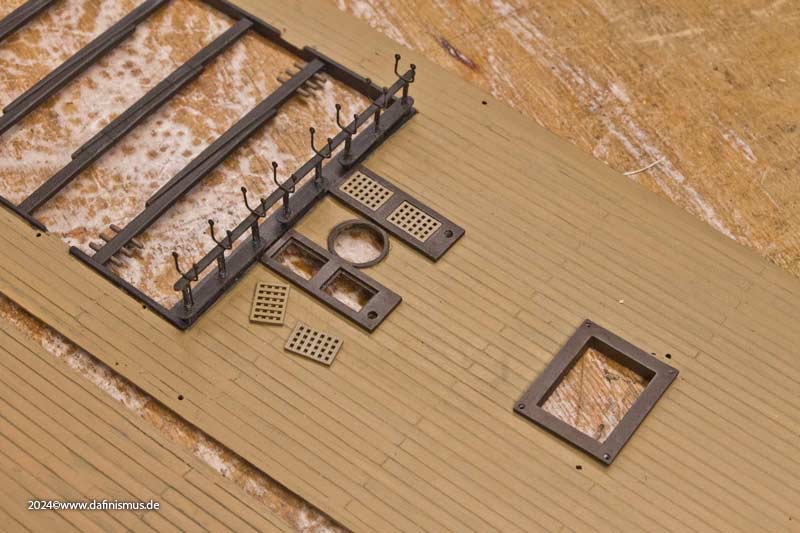
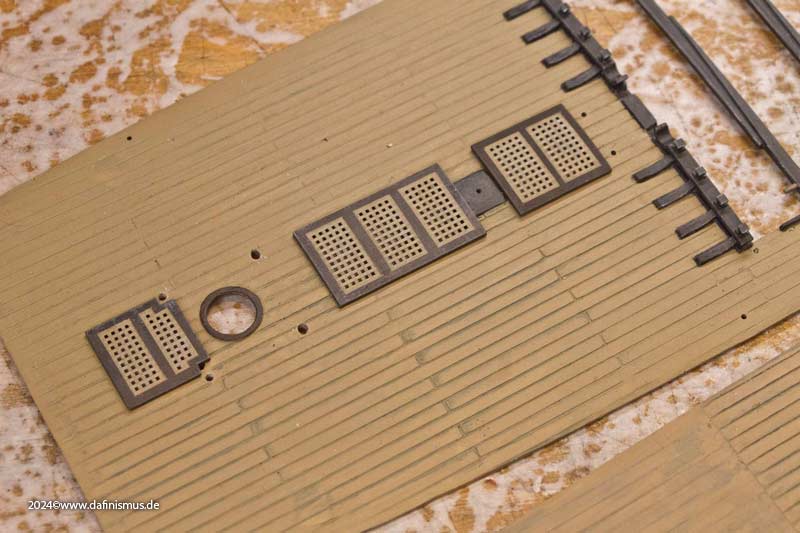
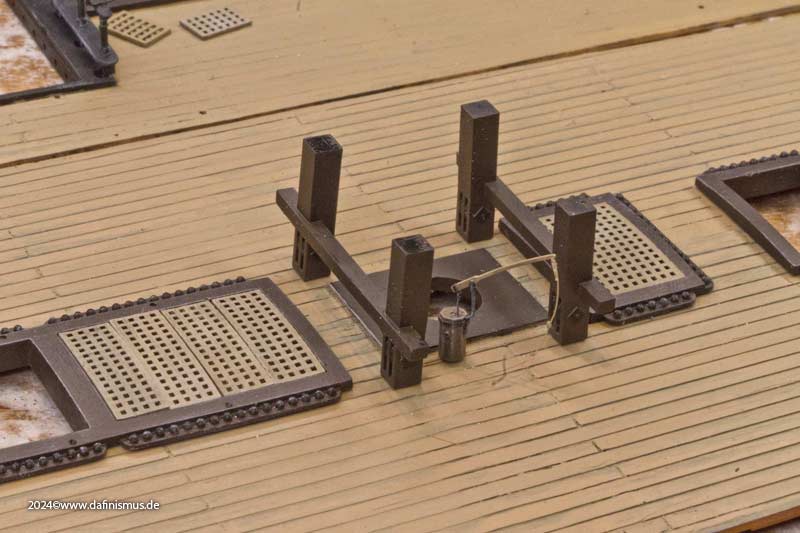
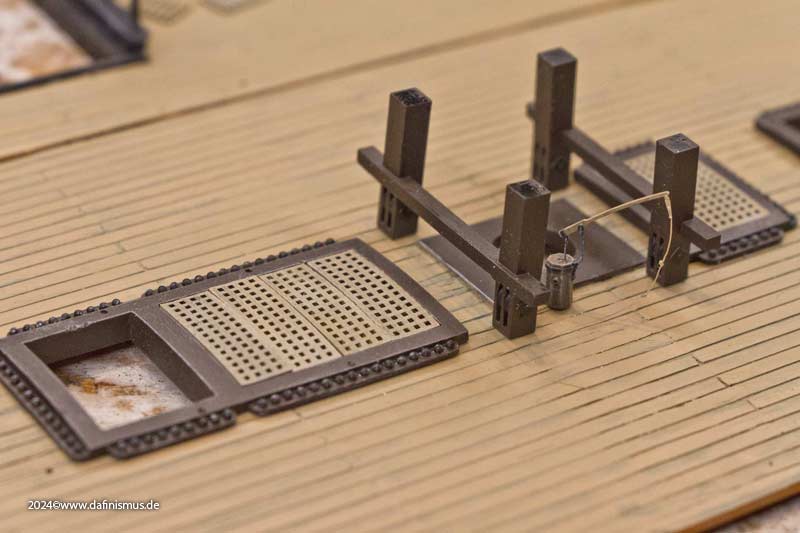
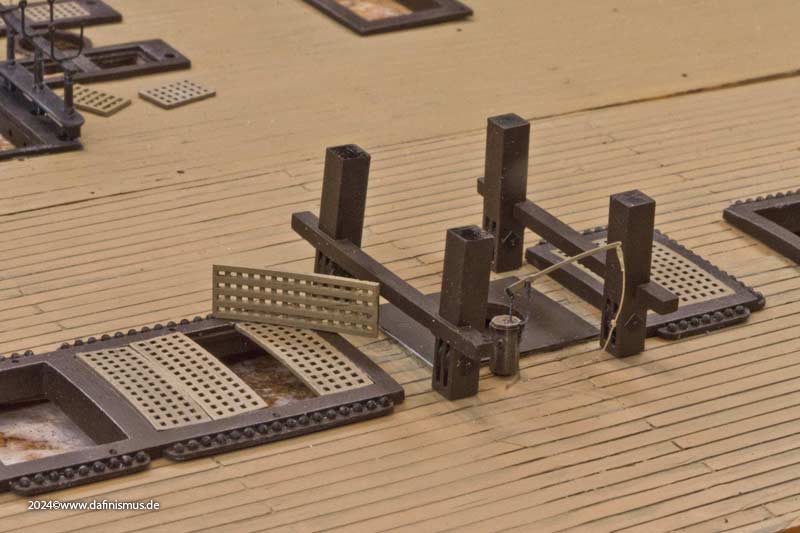
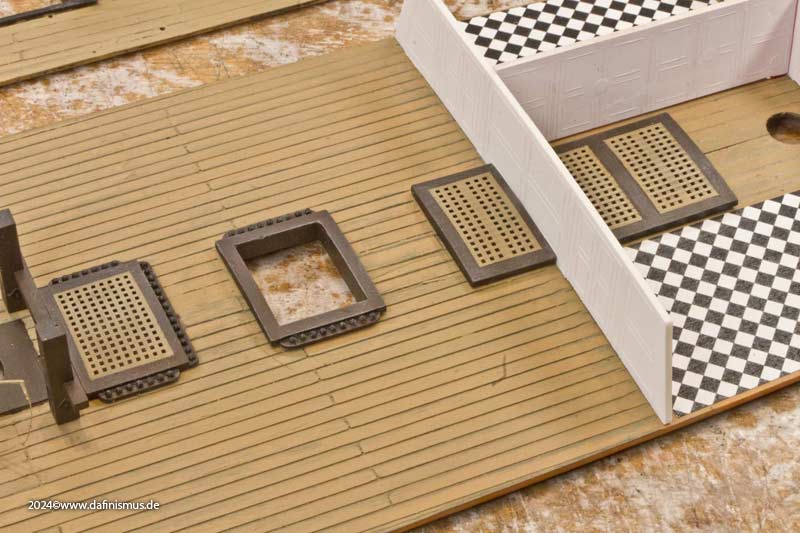
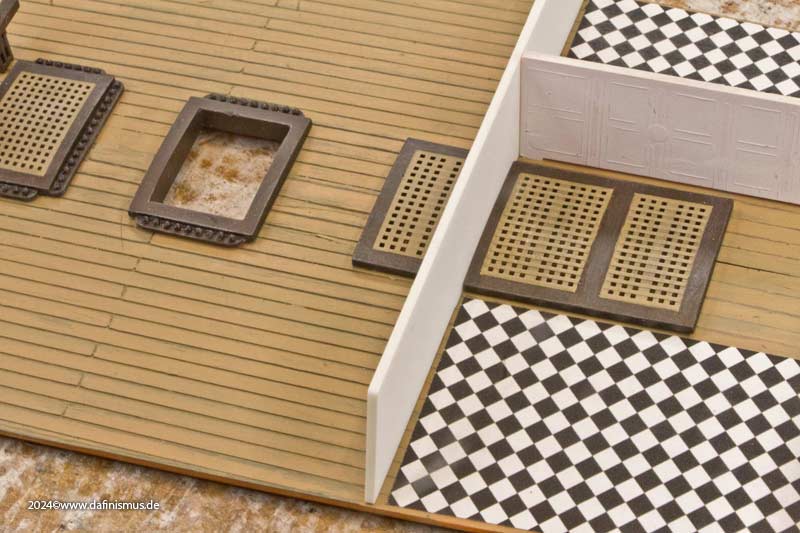
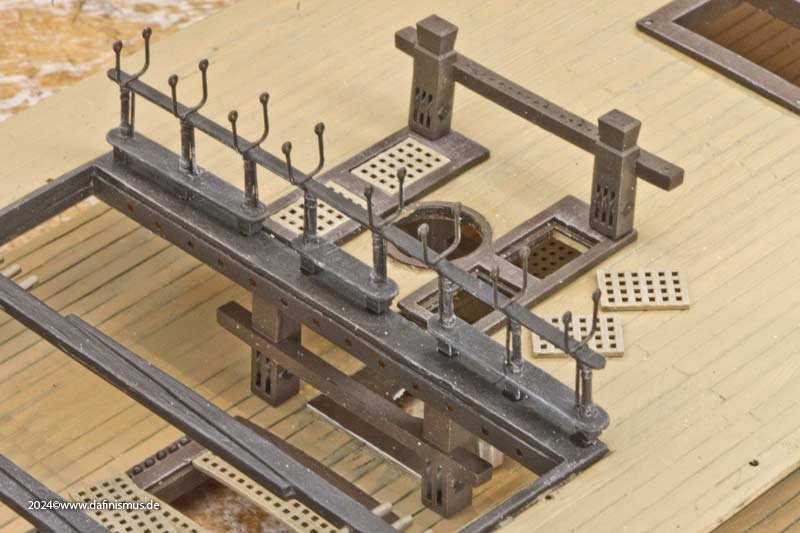
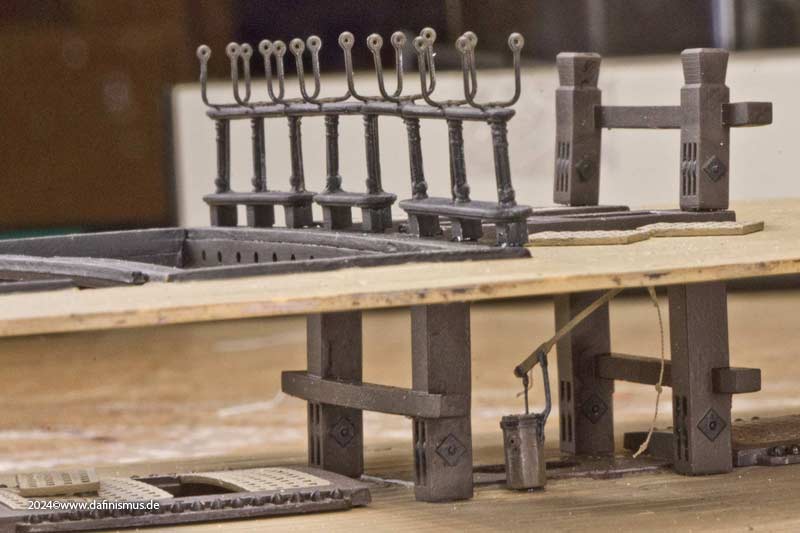
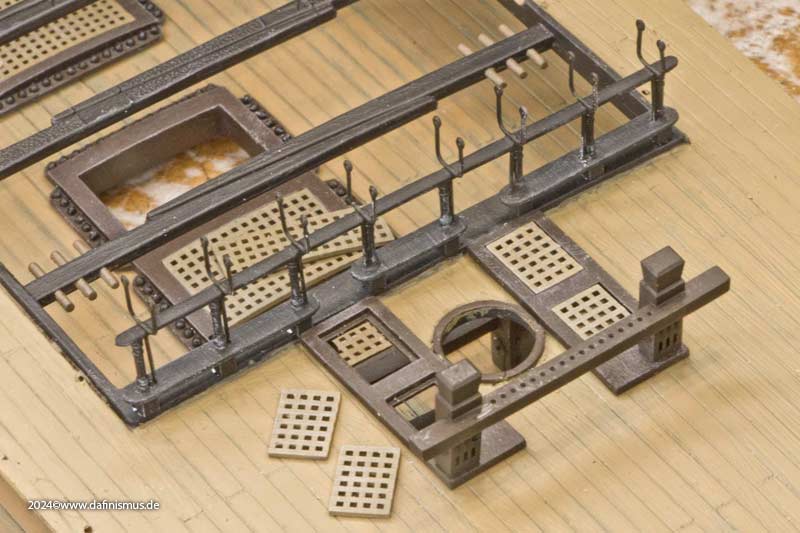
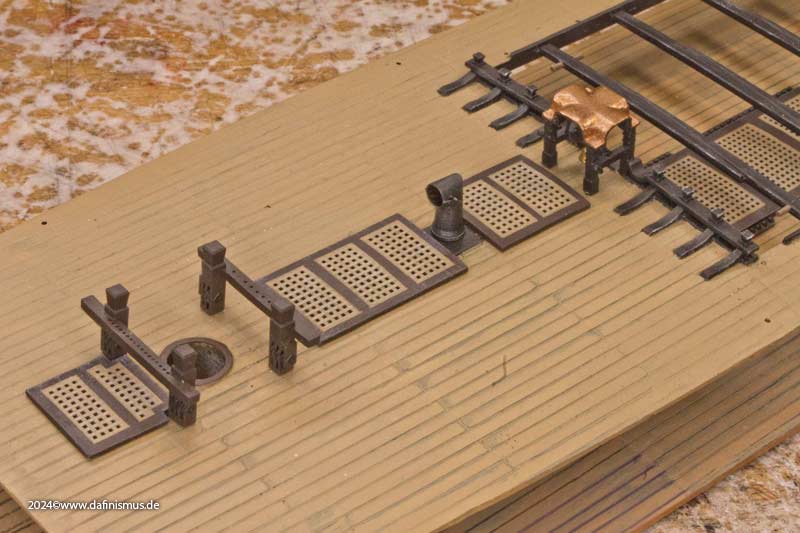

















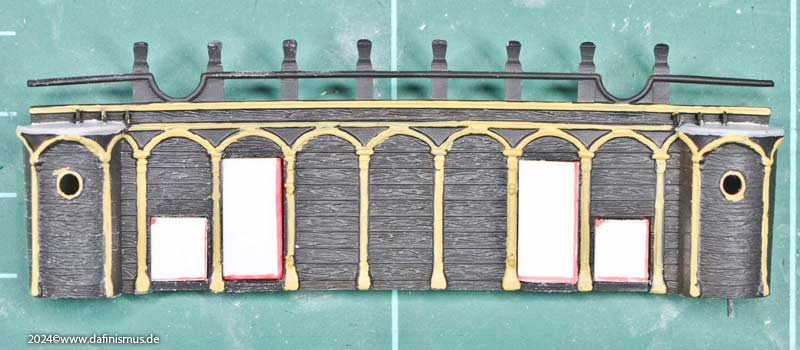
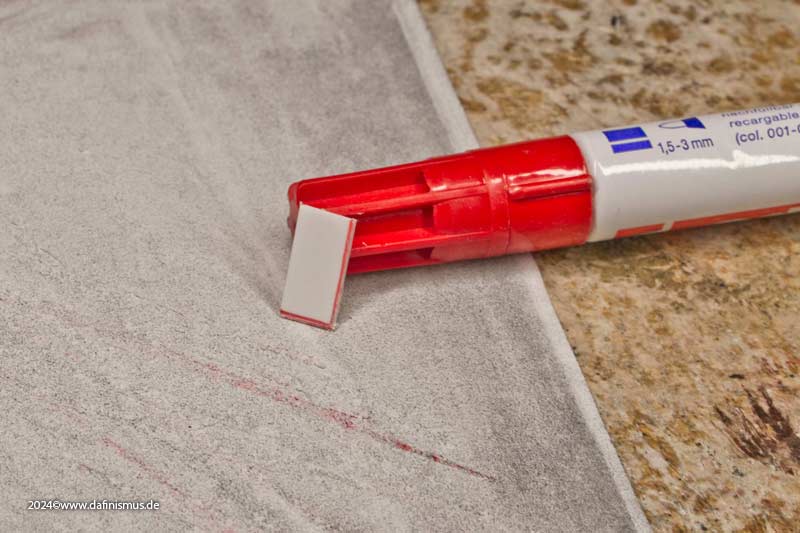
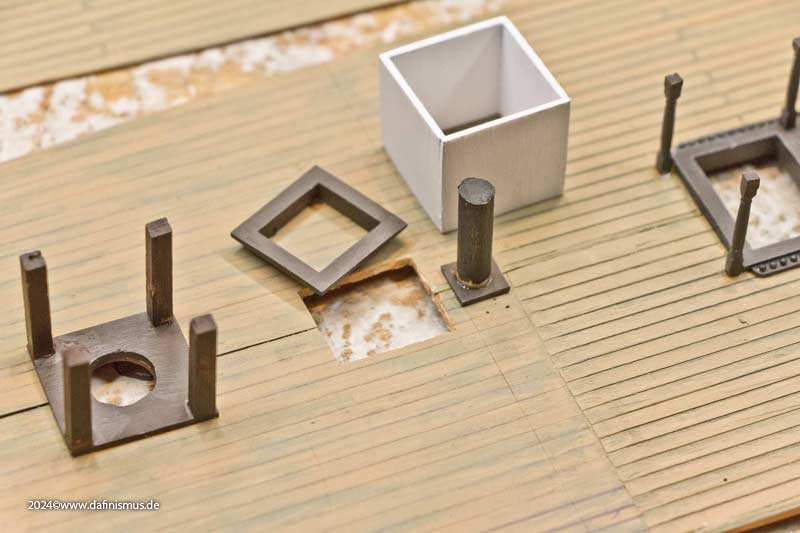
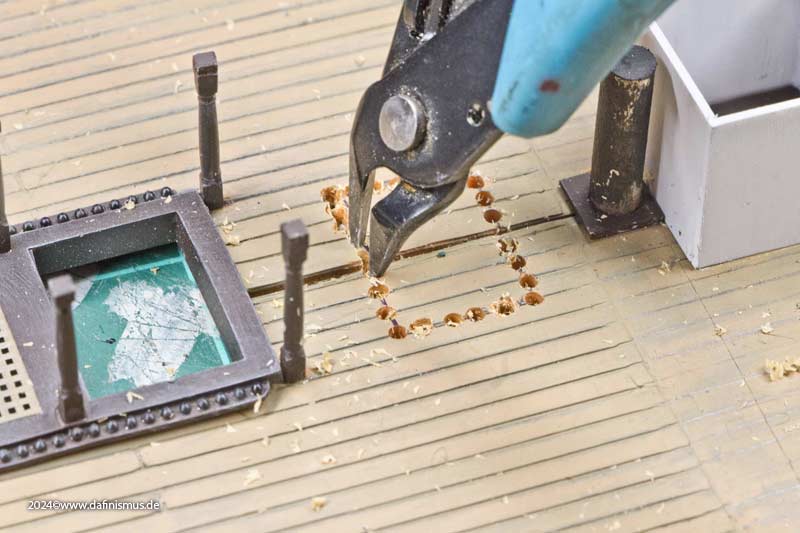
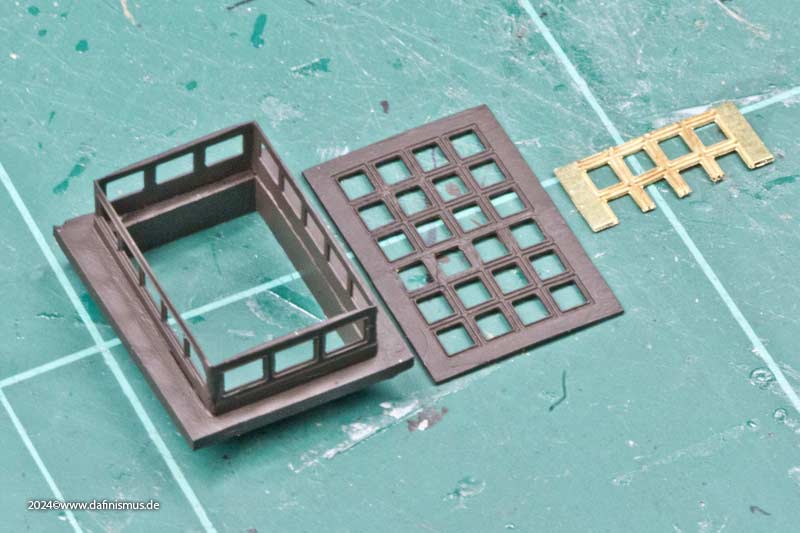
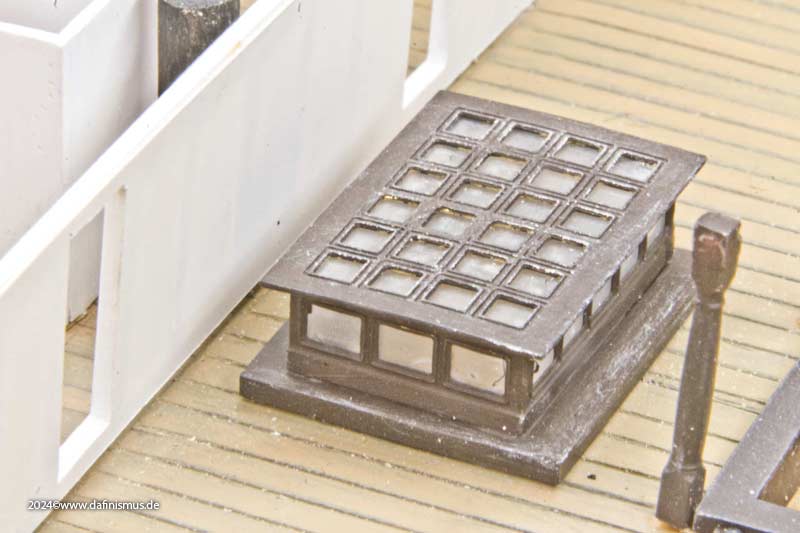
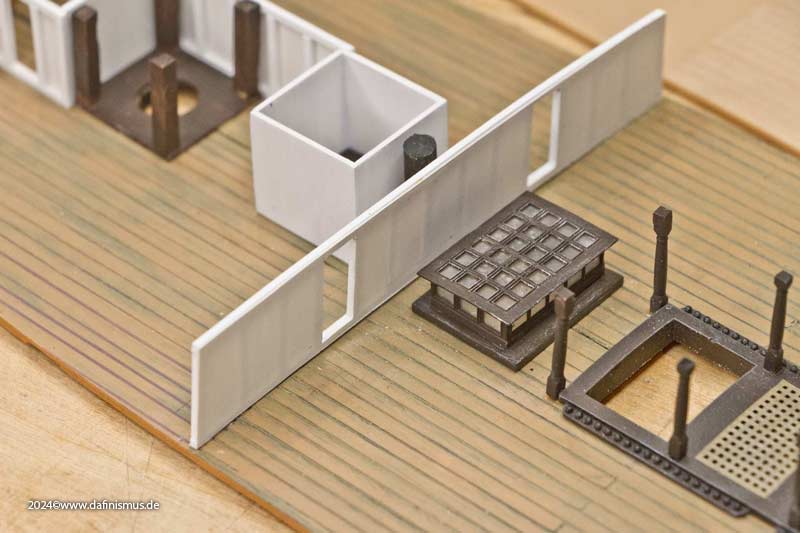
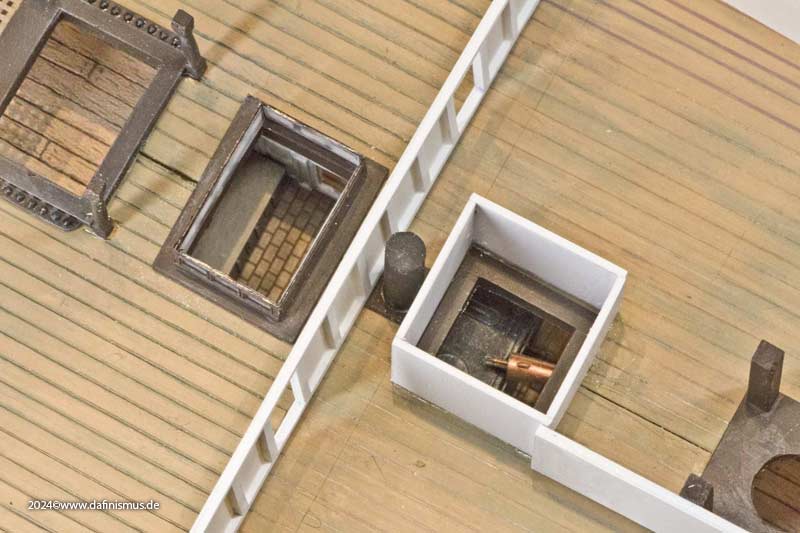
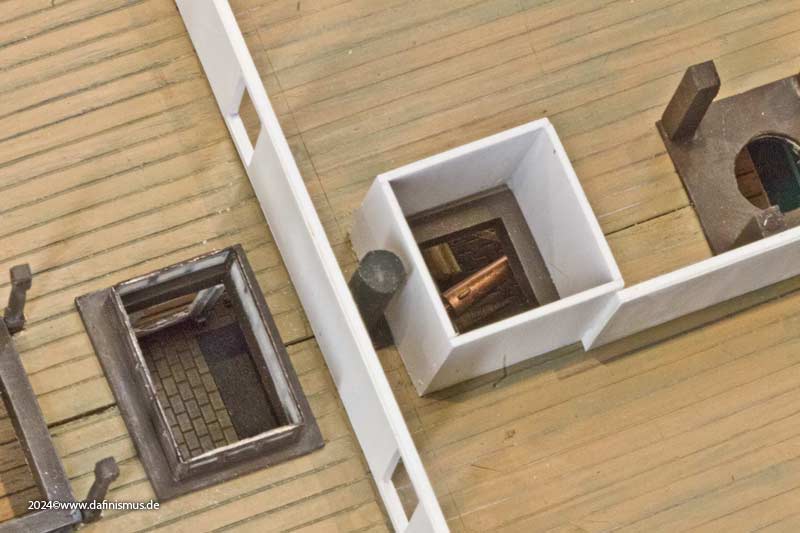
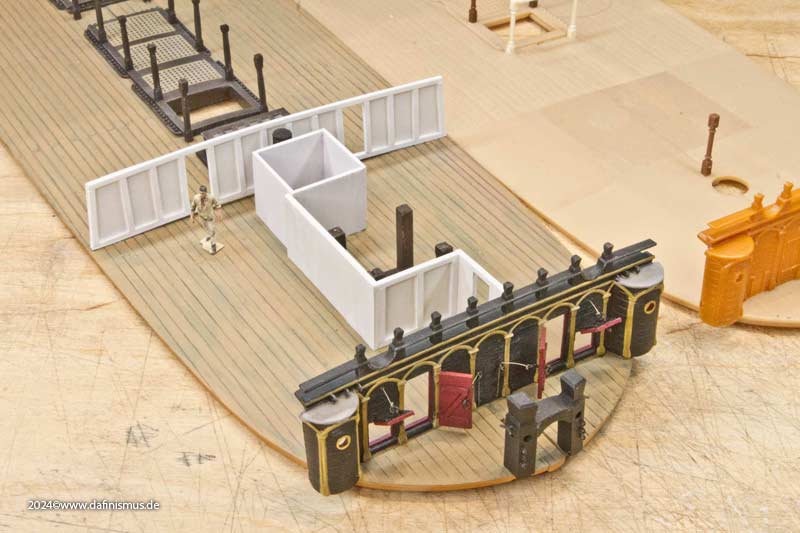
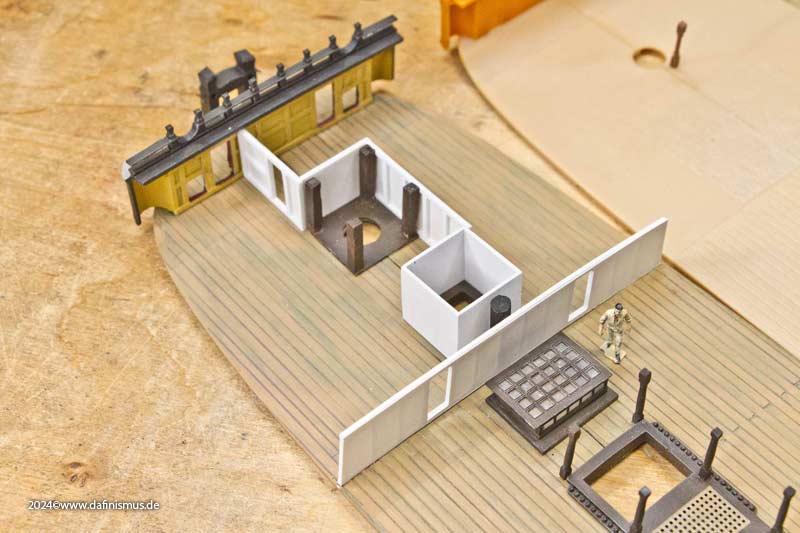
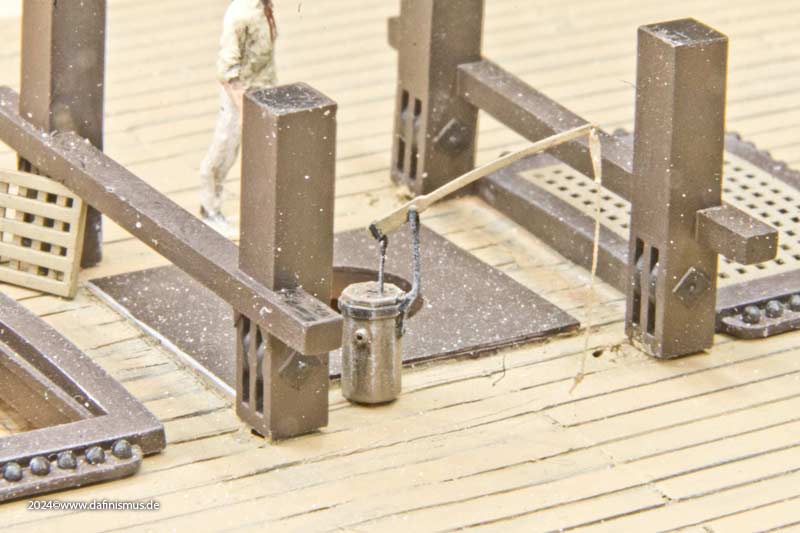
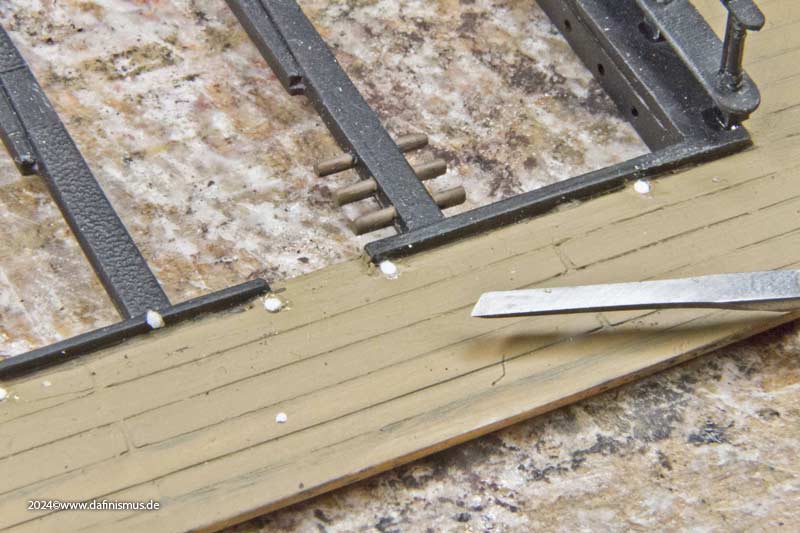
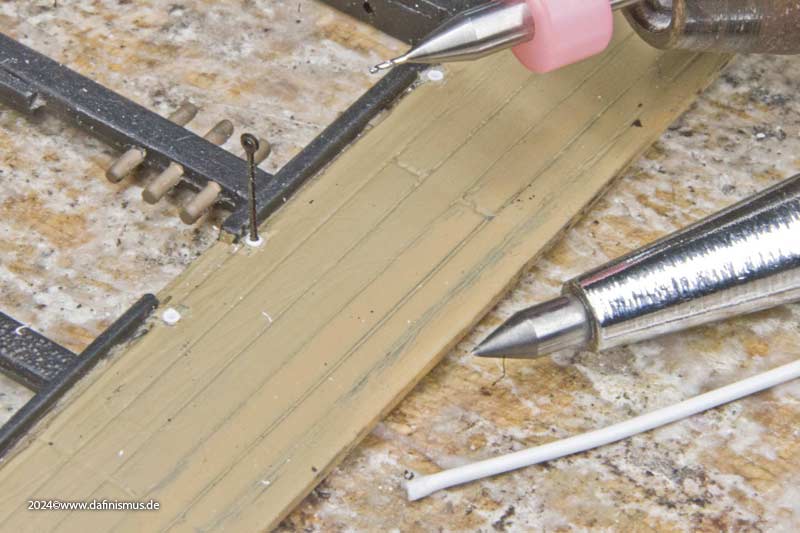
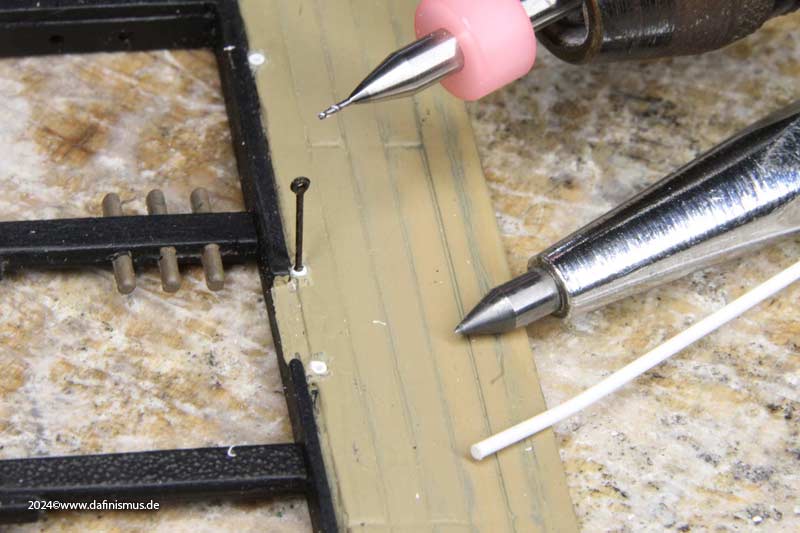
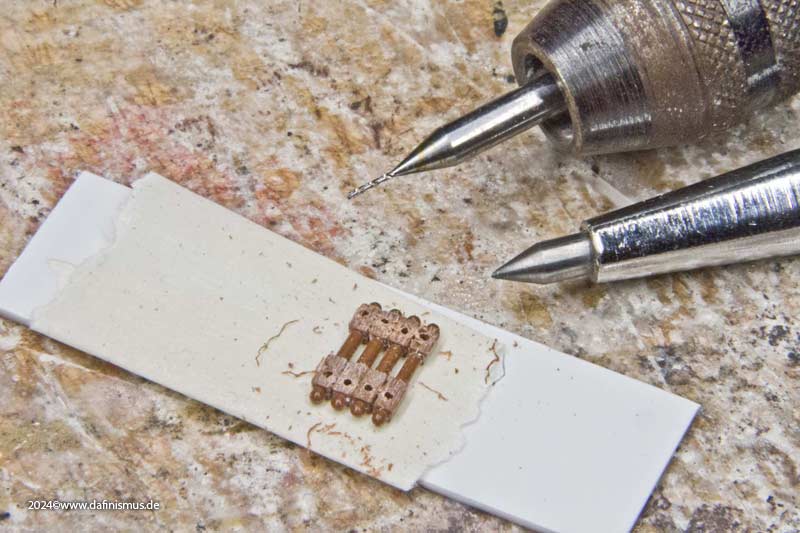
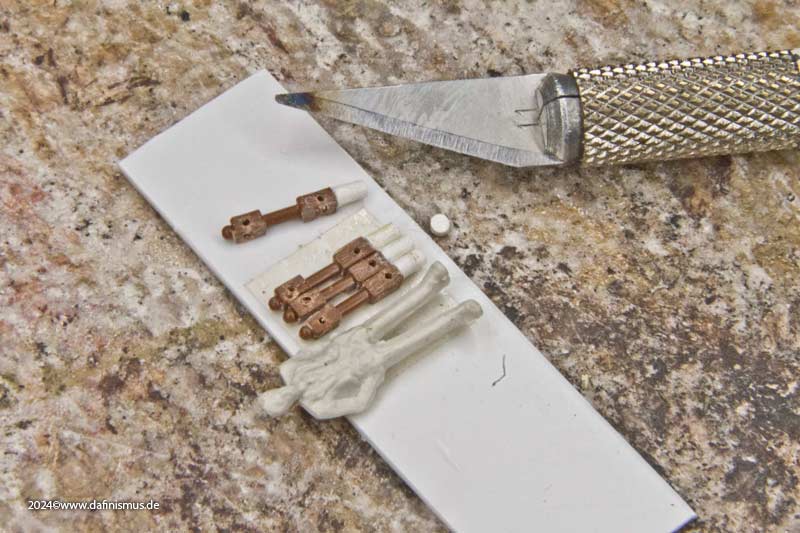
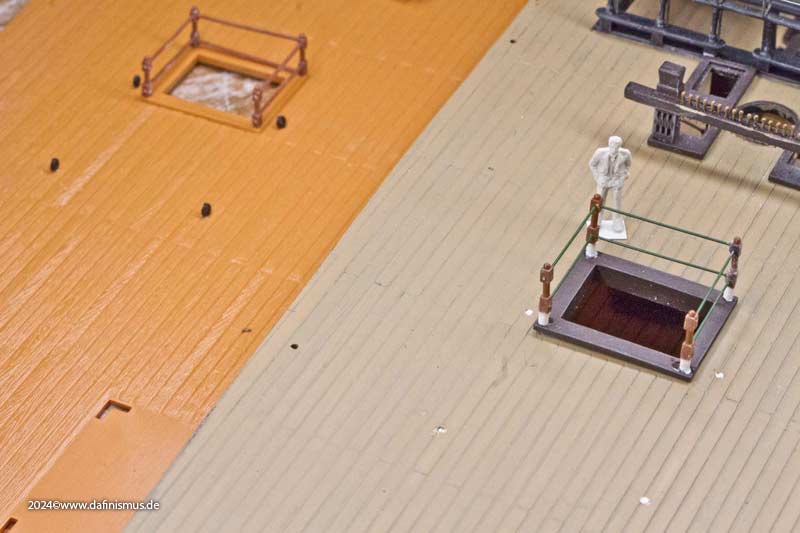
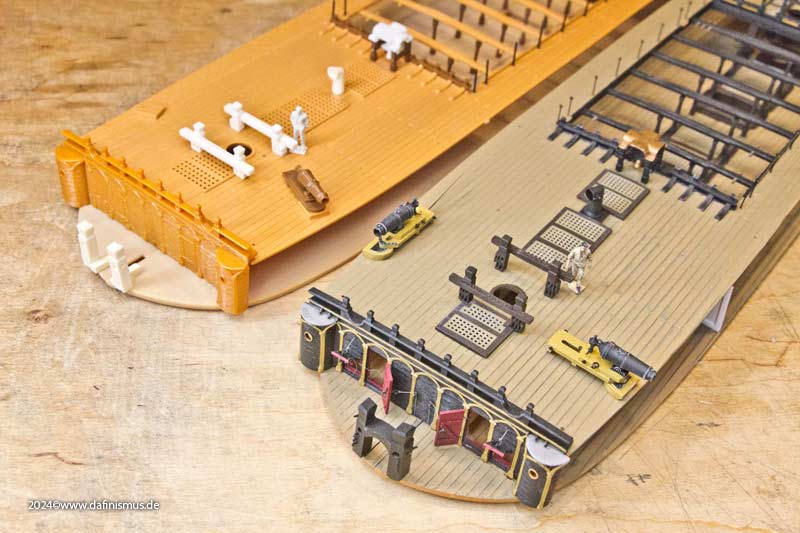
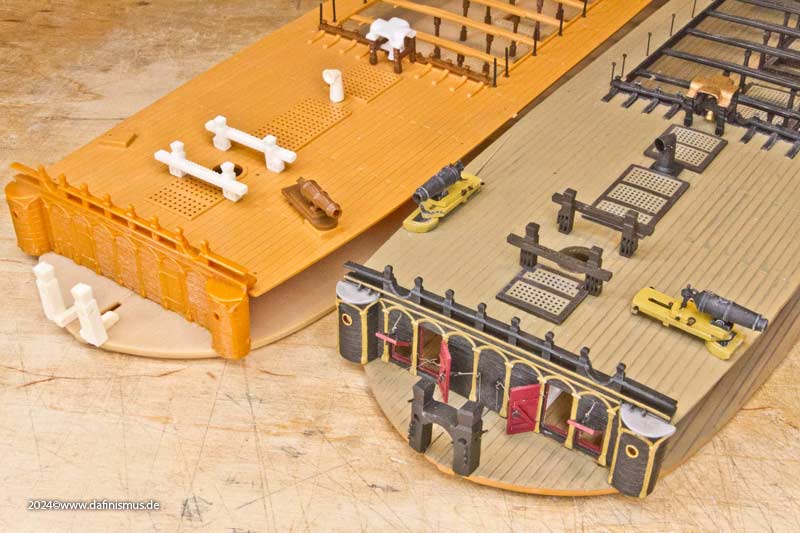
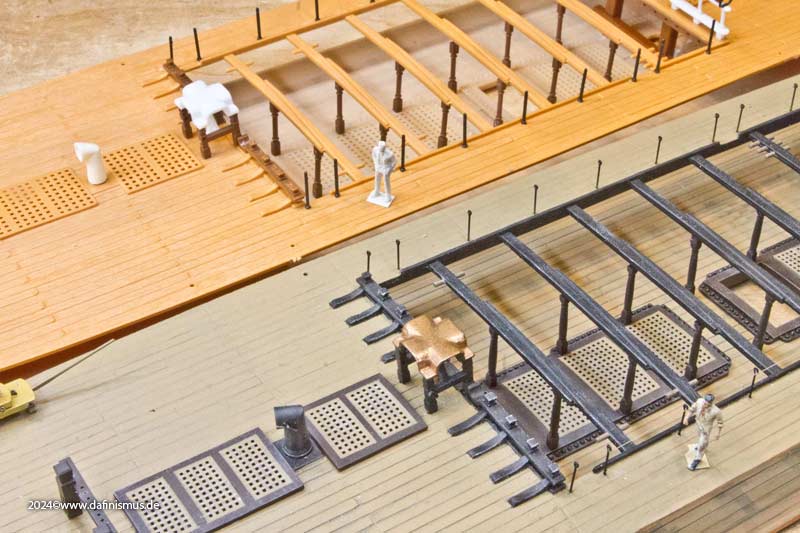
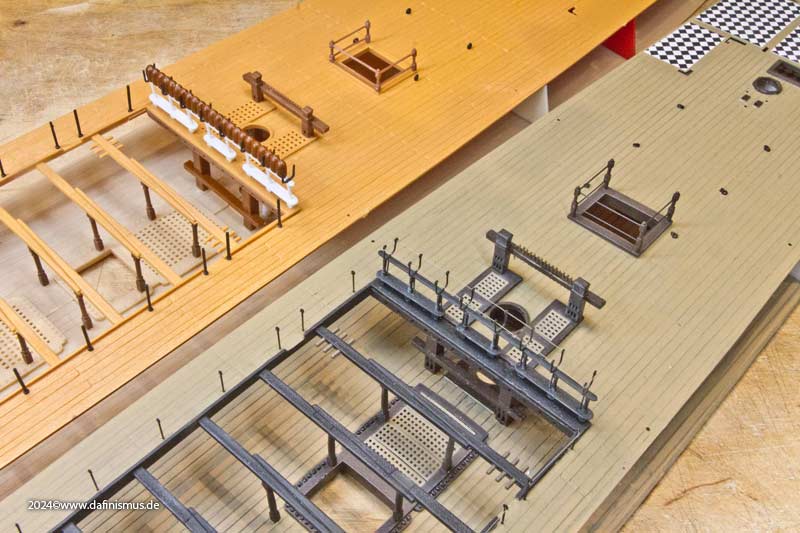
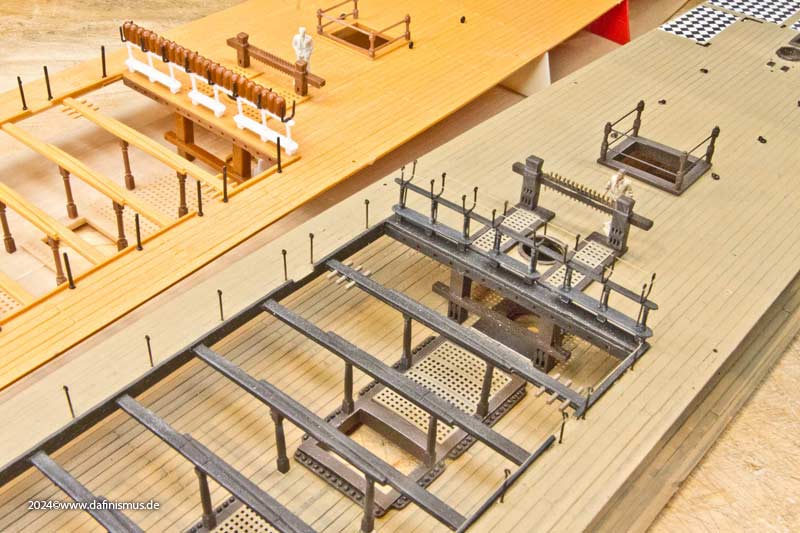
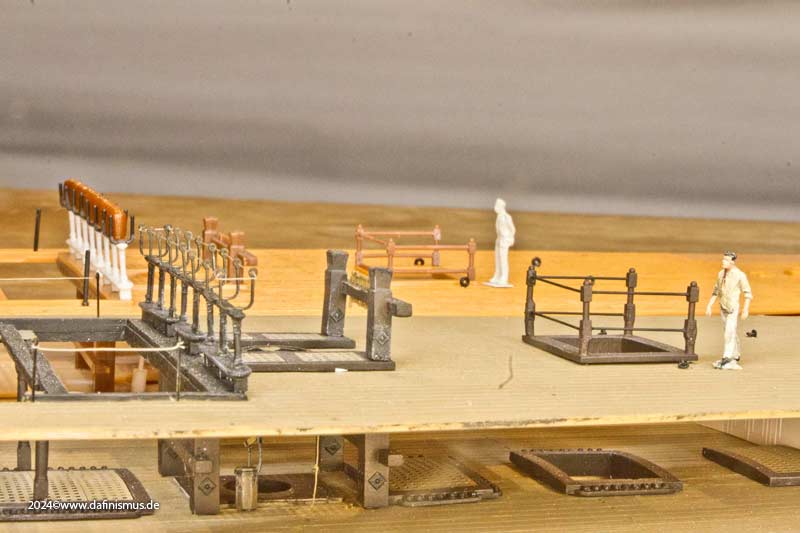
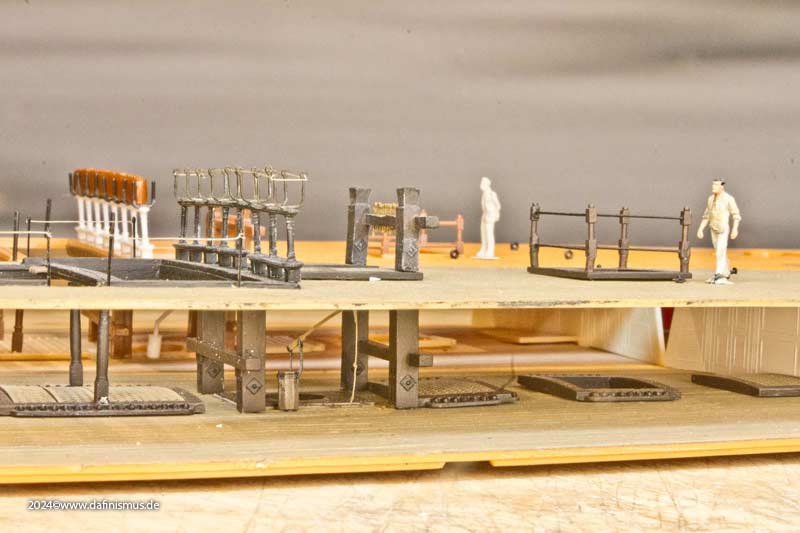
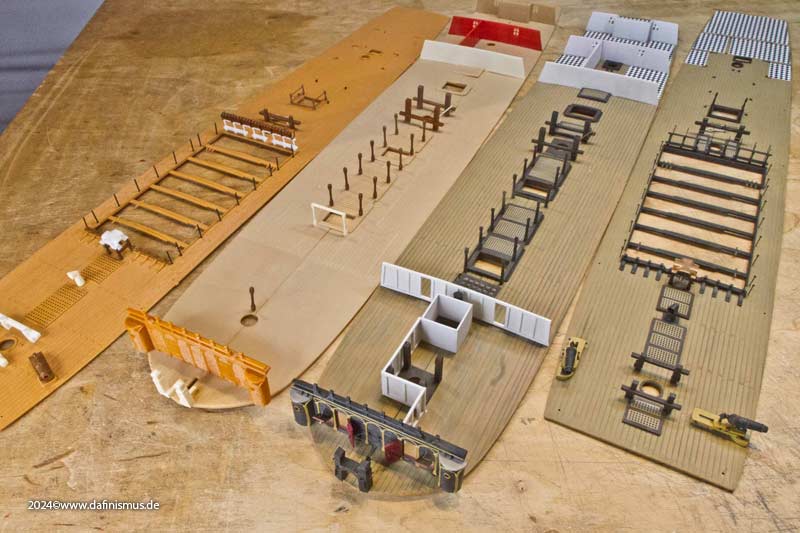
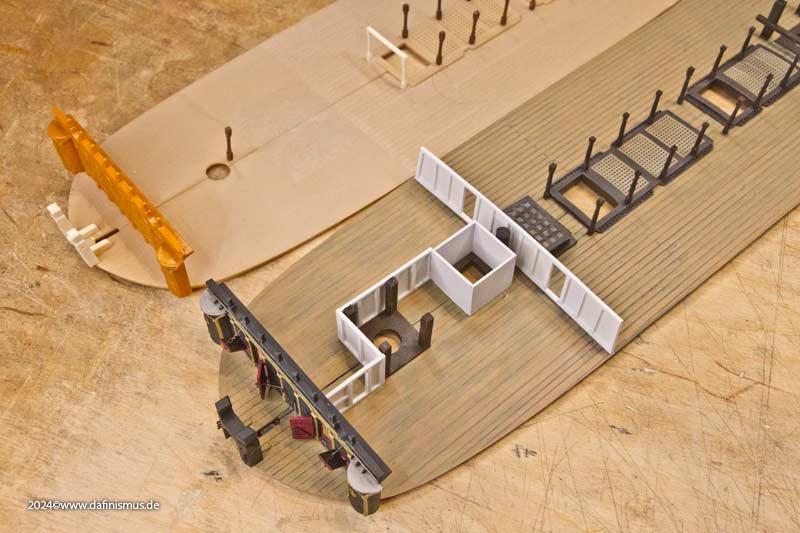
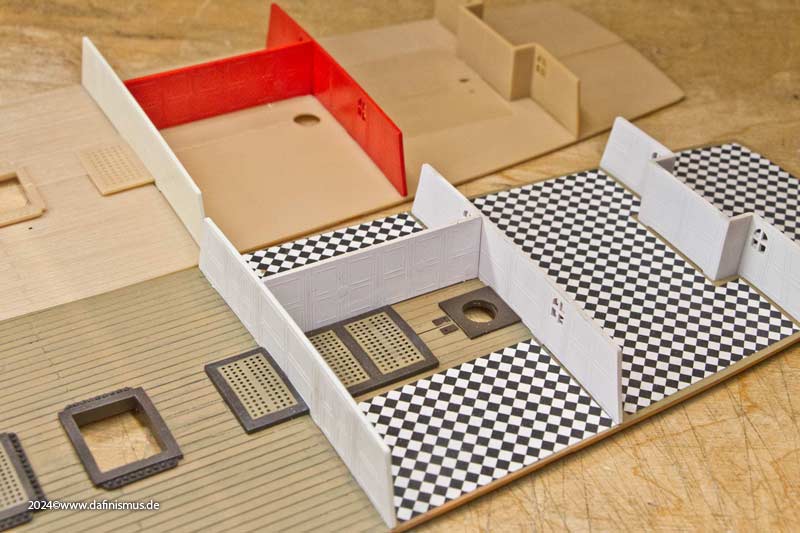
 – the comparison isn't entirely fair, but it looks good what you can conjure up with it ;-)
– the comparison isn't entirely fair, but it looks good what you can conjure up with it ;-)